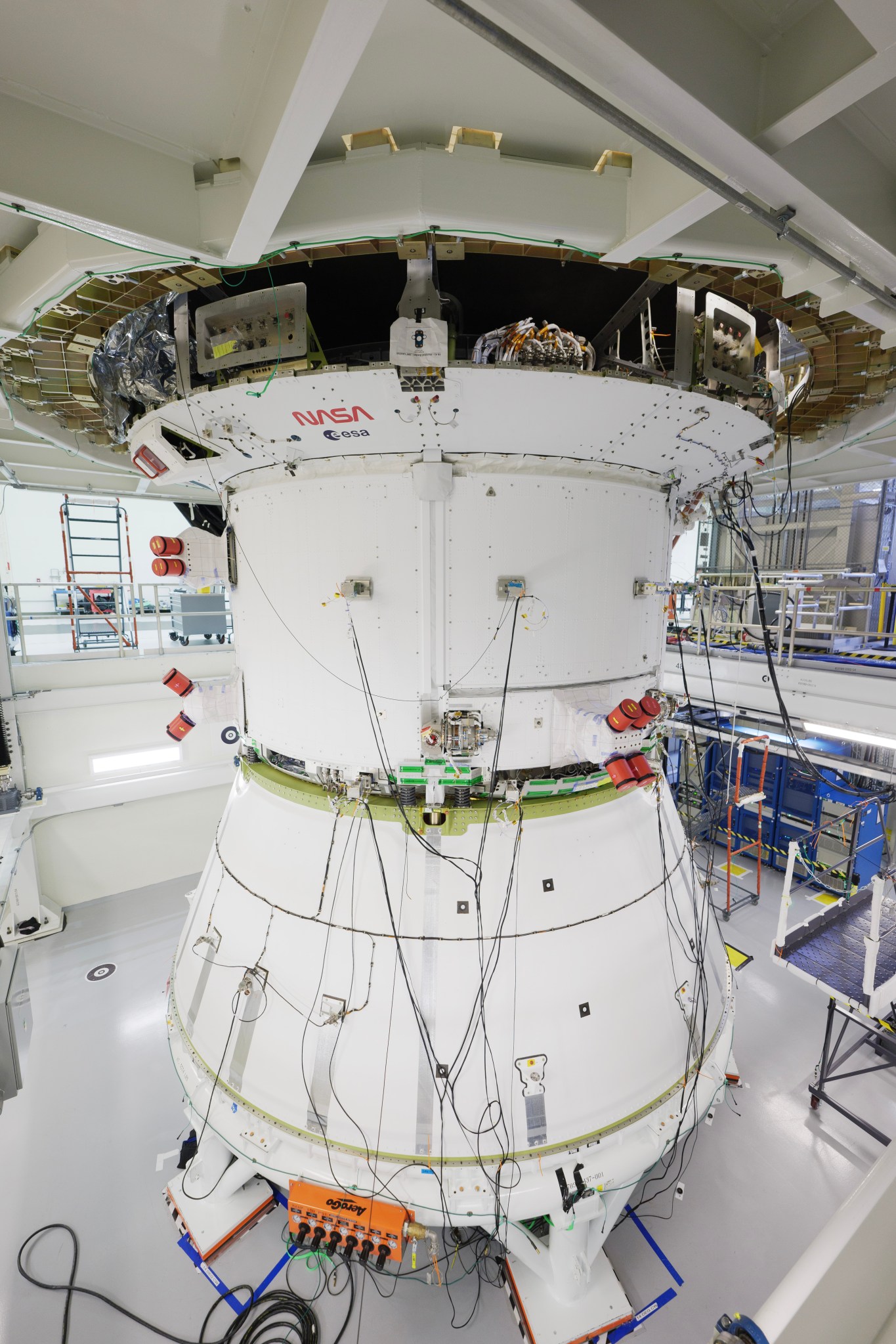
Art and science merge as teams add the NASA “worm” logo on the SLS (Space Launch System) solid rocket boosters and the Orion spacecraft’s crew module adapter at NASA’s Kennedy Space Center in Florida for the agency’s Artemis II mission.
The iconic logo was introduced in 1975 by the firm of Danne & Blackburn as a modern emblem for the agency. It emerged from a nearly 30-year retirement in 2020 for limited use on select missions and products.
NASA’s Exploration Ground Systems and prime contractor Jacobs began painting the red logotype onto the segments that form the Moon rocket’s two solid rocket boosters Jan. 22. To do so, crews used a laser projector to first mark off the location of the logo with tape, then applied two coats of paint and finished by adding several coats of clear primer. Each letter of the worm logo measures approximately 6 feet and 10 inches in height and altogether, stretches 25 feet from end to end, or a little less than the length of one of the rocket’s booster motor segments.
The location of the worm logo will be moderately different from where it was during Artemis I. While it will still be located on each of the rocket’s 17 story boosters, the modernist logo will be placed toward the front of the booster systems tunnel cover. The SLS boosters are the largest, most powerful solid propellant boosters ever flown and provide more than 75% of the thrust at launch.

Around the corner inside the Neil Armstrong Operations and Checkout Building at Kennedy, personnel adhered the worm logo and ESA (European Space Agency) insignia Jan. 28 on the spacecraft’s crew module adapter. The adapter houses electronic equipment for communications, power, and control, and includes an umbilical connector that bridges the electrical, data, and fluid systems between the main modules.
In October 2023, technicians joined the crew and service modules together. The crew module will house the four astronauts as they journey around the Moon and back to Earth on an approximately 10-day journey. The spacecraft’s service module, provided by ESA, will supply the vehicle with electricity, propulsion, thermal control, air, and water in space.

SLS and the Orion spacecraft are central to NASA’s deep space exploration plans, along with advanced spacesuits and rovers, the Gateway space station planned for orbit around the Moon, and commercial human landing systems.




























